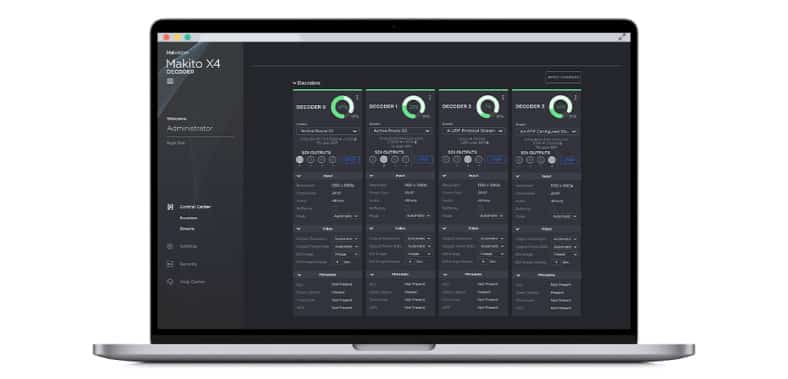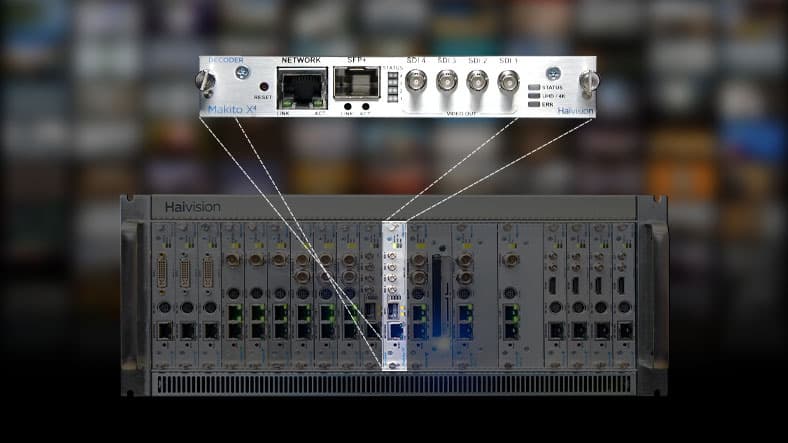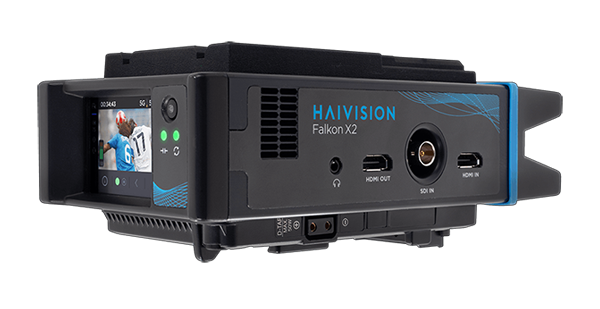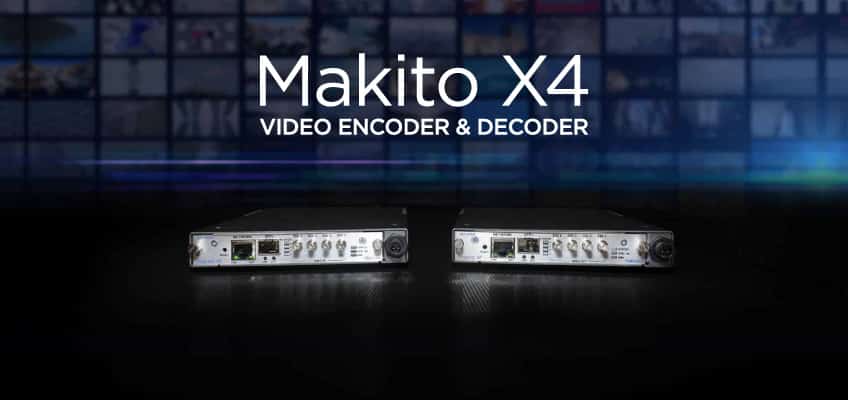Did you catch the latest SRT Tuesday webinar sponsored by Microsoft and the SRT Alliance? In case you missed it, you can now watch the recording on-demand to learn more about how to leverage the SRT streaming protocol along with Haivision’s state of the art video solutions to create low latency 4K workflows for remote production, contribution, and monitoring over IP networks.
Ultra Low Latency 4K over IP Demo
Using a 4K camera, the Makito X4 video encoder and decoder, along with a 4K display, Ghislain Colette, Vice President, Product Management at Haivision gives a live demo of point to point low latency video streaming. Using HEVC compression to stream 4K video over an IP network, results are clear to see; ultra-low latency from camera to display.
Setting up an end-to-end 4k low latency contribution workflow using SRT
Curious to find out how Haivision products can deliver low latency, live 4K video for broadcast contribution, monitoring, and distribution using SRT? Using a Makito X4 Encoder, an SRT Gateway for stream routing, and the newest member of the Haivision family, the Makito X4 Decoder, this webinar demonstrates how quick and easy it is to create a live 4K video stream with step by step instructions.
Haivision’s Vice President of Product Marketing, Marcus Schioler, walks us through the setup of each component in the 4K broadcast contribution workflow. First, the Makito X4 video encoder is used to encode a camera’s SDI video to HEVC. Then the video encoder delivers the UHD video as an SRT stream to an SRT Gateway virtual machine deployed within the Microsoft Azure cloud for stream routing and replication. By using SRT Gateway, streams can be easily shared across local network firewalls.
The final step is setting up the brand new Makito X4 video decoder with its slick new UI to receive the SRT stream from the Makito X4 video encoder via the SRT Gateway.
 Haivision Makito X4 Decoder Brand New UI
Haivision Makito X4 Decoder Brand New UI
The All New Makito X4 Decoder: What You Need to Know
Ghislain provides an in-depth overview of the key features of the newly released Makito X4 Decoder, highlighting what makes this video decoder a vital component of 4K over IP workflows. A perfect companion to the award-winning Makito X4 Encoder, the video decoder is built on the same video processing platform and can:
- decode 1 x 4K/UHD (2160p60) or 4 x HD (1080p60)
- decode both HEVC and H.264
- deliver ultra-low latency 4K video, end-to-end
- stream 10-bit 4:2:2 contribution content at any resolution, for pristine quality video
- enable multi-camera synchronization across IP networks for remote production with built-in frame synchronization thanks to Haivison’s Stream Sync technology
- support SRT as well as standard MPEG transport streams over UDP or RTP
Highest Channel Density Available
 Makito X4 Decoder and MB21X Chassis
Makito X4 Decoder and MB21X Chassis
Ghislain explains that where the Makito X4 platform really shines is with its unrivaled density and flexible form factor. Its super low power (maximum 18watts), portable small form factor makes the decoder extremely versatile and perfect for deployment in the field. Available as an appliance or a blade, the decoder can be used within Haivision’s MB6 or MB21X chassis to deliver the highest density decoding solution in the industry with up to 21 channels of 4K or 84 channels of HD at 1080p.
Monitor SRT Feeds From Anywhere, For Free!
In addition to setting up the contribution stream, the webinar also demonstrates how easy it is to monitor SRT feeds remotely thanks to the free Haivision mobile app, Play Pro. Play Pro offers users a convenient way to monitor any feed or channel from anywhere using the SRT protocol. You can create universal links for easy sharing of SRT steams with production partners and work colleagues. Marcus and Ghislain also give a quick demonstration on how to share universal links using QR codes. Using Play Pro, broadcast producers, directors, executives, and on-air talent can monitor contribution streams and view return feeds from the field. These can include live-to-air streams, remote interview streams, or even teleprompter feeds from the editorial desk.
Central Device Management
Finally, Ghislain and Marcus also discuss how Haivision EMS, an element management system, can be used to centrally manage many Haivision devices across multiple locations. EMS allows users to easily view all Makito X, Makito X1, and Makito X4 video encoders and decoders, group, and tag devices by function or location, for example, monitor device status in real-time, and carry out centralized upgrades from a single screen. By centrally managing devices using EMS, organizations can boost operational efficiency, quickly identify and resolve any performance issues, and improve quality of service.


























